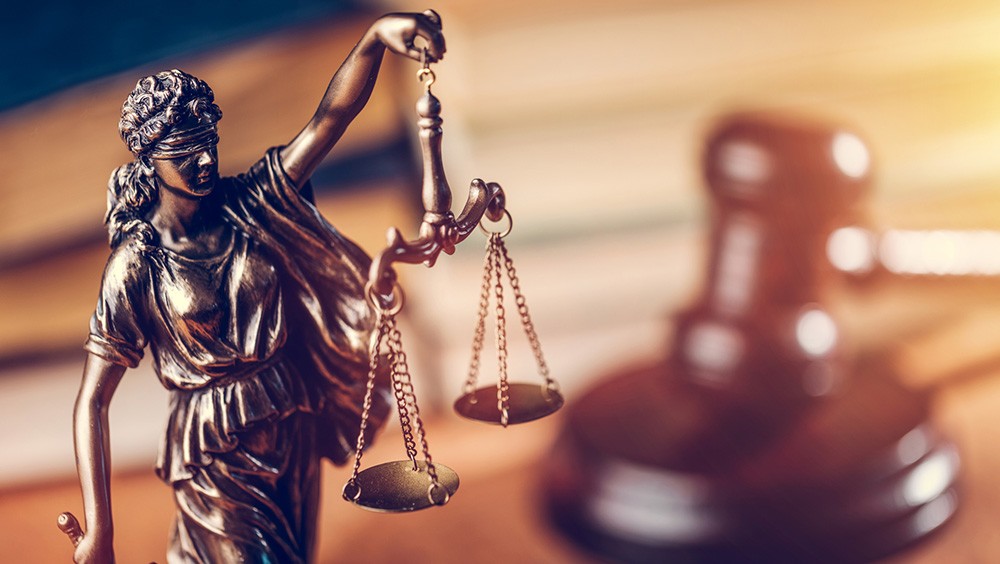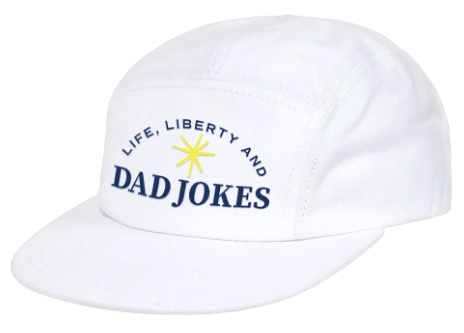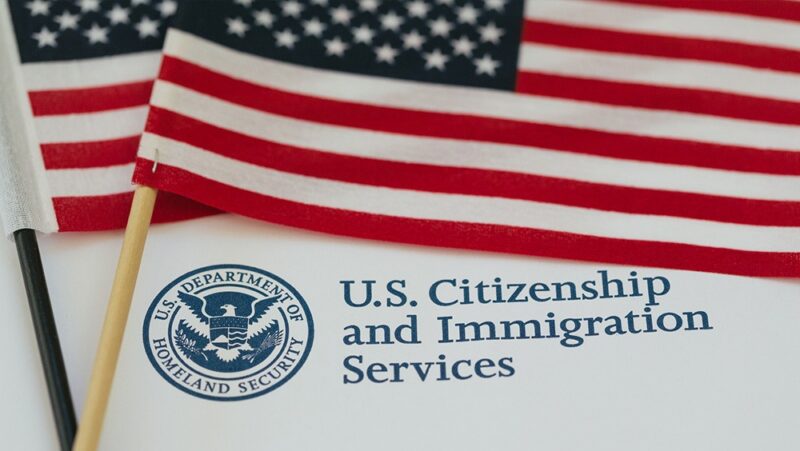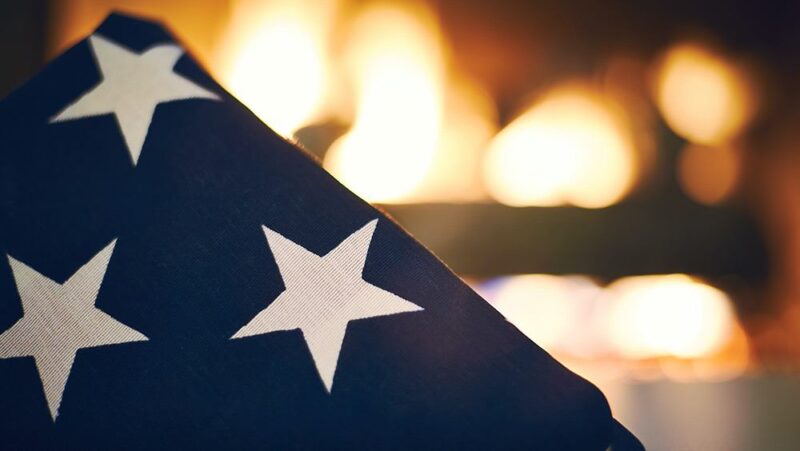17 Freedom of Speech Court Cases You Should Know

As long as there has been a First Amendment, people have pushed the boundaries of what free speech means and the government has pushed back. Freedom of speech court cases, especially these key Supreme Court cases, have helped clarify and define this fundamental freedom.
Discover 17 of the most prominent freedom of speech court cases in history
1. State laws must be consistent with the First Amendment and not violate freedom of speech | Gitlow v. New York (1925)
In this case, the Supreme Court’s ruling relied on the idea that the First Amendment’s opening words – “Congress shall make no law” – really means government at all levels.
More specifically, the ruling said that state governments must uphold the Constitution and protect the rights in it, including freedom of speech and the press. This is called “incorporation.” Later cases affirmed that all levels of government are required to uphold all First Amendment freedoms.
In this freedom of speech court case, the court agreed with the conviction of Benjamin Gitlow, a socialist accused of writing a “seditious manifesto.” But it pointed out that the New York state law he violated needed to be consistent with the First Amendment.
2. First Amendment freedom of speech includes nonverbal expression | Stromberg v. California (1931)
In this case, the Supreme Court declared that free speech protects more than the words we say.
A California state law made it a crime to display a red flag (associated with communism) for any of several reasons, including as a symbol of opposition to organized government. Yetta Stromberg, a summer camp counselor who raised the red Communist Party flag at camp, was convicted under this law.
The Supreme Court had said six years earlier that the First Amendment applies to state laws. Now it ruled that California’s state law was unconstitutional for violating free speech rights.
Importantly, the court also considered a nonverbal expression – flying a flag – as free speech when it said that the law against “a sign, symbol, or emblem” violated the First Amendment.
3. The First Amendment prevents government from requiring speech just as it prevents government from limiting speech | West Virginia Board of Education v. Barnette (1943)
In 1940, the Supreme Court said Pennsylvania could expel public school students for declining to salute the flag and say the pledge, citing a need for “national unity.”
Just three years later, the court reversed that ruling. It said that a West Virginia law requiring students to pledge violated the free speech rights of Jehovah’s Witnesses, who refused to participate for religious reasons.
The court ruled that people can’t be forced to say words they don’t believe. This established the principle that freedom of speech protects the right not to speak as well as the right to express your views.
“[I]f there is any fixed star in our constitutional constellation, it is that no official, high or petty, can prescribe what shall be orthodox in politics, nationalism, religion, or other matters of opinion or force citizens to confess by word or act their faith therein.” ― Supreme Court Justice Robert H. Jackson in 1943
4. First Amendment freedom of speech includes anonymous speech | Talley v. California (1960)
In 1958, the Supreme Court said the NAACP in Alabama should not be required to reveal its member list, protecting the right to associate as part of the First Amendment right to assembly.
Two years later, the court said the First Amendment also protects anonymous speech. It ruled in favor of civil rights activists who wanted to distribute an anonymous pamphlet about discrimination.
In both of these freedom of speech court cases, forcing activists to name themselves could have put them in danger. The court cited a long history of publishing opinions anonymously or under pen names for safety and other reasons.
It said a ban on all anonymous pamphlets was too broad and not a good enough reason on its own to overcome freedom of speech.
One judge who disagreed pointed to requirements for transparency in political lobbying and campaigning as limits on anonymous speech. Some such limits have been upheld, but within narrow boundaries.
5. The bar for limiting symbolic speech includes four criteria | United States v. O’Brien (1968)
The Supreme Court previously ruled that freedom of speech includes more than spoken words. It can also include acts of expression.
Now it laid out when the government may limit “expressive conduct.” It required the government to meet four criteria to limit such expression with laws or regulations:
- The law or regulation must be within the government’s constitutional power.
- The law or regulation must further “an important or substantial” government interest; in other words, it must be a very good reason related to the government’s responsibilities.
- The law or regulation must not be related to “the suppression of free expression,” which means that it cannot restrict the expression based on the message it is trying to convey.
- The impact of the law or regulation must be no greater than necessary to achieve the goal.
In this freedom of speech court case, the court ruled that the government did meet all four criteria when it punished Paul O’Brien for burning his draft card in front of a Boston courthouse. O’Brien argued the act was political speech. The court disagreed 8-1, saying the government was not punishing O’Brien for opposing the draft, it was protecting its ability to administer the draft because draft cards were the only means of identifying an individual’s draft status.
6. Some speech advocating for violence or crime can be protected; the bar to punishment is high | Brandenburg v. Ohio (1969)
In this case, the court raised the bar for when inflammatory speech can be limited, setting the current, very high standard.
It said the speech must “incite imminent lawless action.” In other words, inflammatory speech loses First Amendment protection if the speaker intended to provoke or directly cause crime or violence, right here and now.
For example, saying that all such-and-such people should be executed may be an extreme and alarming view. But it is most likely protected speech. A more specific and immediate statement, such as pointing at a person and telling a crowd to take them out, may not be protected. It directly asks for (incites) a crowd to injure or kill someone (lawless action) right then (imminently).
In ruling that a white supremacist’s vaguely threatening statements were protected speech, the court came to the opposite conclusion it had earlier in the Gitlow case above (though it did not overturn that case’s principle that the First Amendment applies to government at all levels).
7. To be punished, threatening speech must be a “true threat” | Watts v. United States (1969)
The Supreme Court again considered when inflammatory speech loses First Amendment protection, and again it set a high bar.
It ruled that threatening speech can be protected, unless the statement constitutes a “true threat.” To determine if a statement is a true threat depends on factors including the context of the statement and its reception.
In this freedom of speech court case, it ruled that an anti-war protestor couldn’t be punished for his speech about then-President Lyndon B. Johnson. When Robert Watts said, “If they ever make me carry a rifle, the first man I want to get in my sights is L.B.J.,” the court said this was a hypothetical and exaggerated statement that made people nearby laugh and wasn’t a credible, real threat.
In June 2023, the court clarified that a statement is not necessarily a true threat if the person it’s about feels afraid. The person who makes the statement must act recklessly, knowing the statement would likely make the recipient afraid but making it anyway.
8. Public school students have First Amendment free speech rights at school | Tinker v. Des Moines Independent Community School District (1969)
This ruling said that students at public schools do not “shed their constitutional rights to freedom of speech or expression at the schoolhouse gate.”
Three Iowa students – John Tinker, Mary Beth Tinker and Christopher Eckhardt – were suspended from school for wearing black armbands to protest the Vietnam War. They appealed their punishment all the way to the Supreme Court and won. The court declared they should have been allowed to wear the armbands.
View this post on Instagram
According to the court, schools can only limit students’ expression if they can be relatively sure it will truly and substantially disrupt school or harm others’ rights. Schools cannot punish a student just because they don’t agree with or like what a student is saying.
MORE: Free speech in schools: What can students say?
9. Even profane speech – unless it is of a few specific, well-defined types – is protected as free speech | Cohen v. California (1971)
The court said that profanity can be protected as free speech, like other types of controversial or inflammatory speech.
The court said that Paul Robert Cohen should not have been convicted for breach of the peace simply because he wore a jacket with a curse word on it to court.
It was a close decision (5-4), but the majority said Cohen’s speech didn’t meet the criteria for unprotected categories of speech.
The government cannot punish speech just because someone might find it offensive. This sort of vagueness invites selective prosecution by the government. The answer, the court indicated, was for those offended to just look away.
10. To be legally considered obscene – and not free speech – speech must meet three specific criteria | Miller v. California (1973)
In this freedom of speech court case, the court created a three-part test to narrowly define what legally can be considered obscene. The three parts of the test are:
- Whether the average person, applying contemporary community standards, would find that the work, taken as a whole, appeals to the prurient interest. In other words, is it overall excessively, unwholesomely lewd?
- Whether the work depicts or describes, in a patently offensive way, sexual conduct specifically defined by the applicable state law. In other words, is it obviously offensively vulgar?
- Whether the work, taken as a whole, lacks serious literary, artistic, political or scientific value. In other words, does it have no other message, meaning or use in our society?
In short, a work may be considered obscene and lose free speech protections if, and only if, the government can show the work meets all three of these elements.
This ruling didn’t immediately settle all questions of potentially obscene expression. Courts still must decide on a case-by-case basis whether challenged works under various state laws meet this legal definition. But it did standardize the considerations and significantly narrow the definition of obscenity.
11. Speech that may be considered hateful is still protected free speech | National Socialist Party of America v. Village of Skokie (1977)
This free speech court case didn’t explicitly define hate speech (there isn’t such a category in U.S. law), but it did say that offensive, even hateful speech is protected, unless it falls within one of the specific otherwise defined types, like true threats.
Is hate speech illegal? How does it apply to the First Amendment? Are there any exceptions?
— Freedom Forum (@1stForAll) August 29, 2023
➡️ https://t.co/jkbE77xLaR pic.twitter.com/oRBD5lgZCg
A small suburb of Chicago banned political protests in its public parks, in part because white supremacists wanted to hold a demonstration there due to the large population of Jewish people and Holocaust survivors.
The white supremacist group challenged the regulations in court, and the Illinois Supreme Court declined to immediately review the First Amendment claim while the protest was on hold.
The Supreme Court said that, procedurally, such a First Amendment case should be heard quickly, and courts should err on the side of allowing controversial free speech while final judgments are pending.
The lower courts, when they got the case back at the Supreme Court’s instruction, said the protest couldn’t be banned just because the message was hateful.
In the end, counterprotests drew larger crowds than any original planned protest by the supremacist group.
In 2011, the Supreme Court restated the idea that even hateful speech can be protected when it upheld the First Amendment right of the Westboro Baptist Church to protest near military members’ funerals with signs the military families found hateful.
“Speech is powerful. It can stir people to action, move them to tears of both joy and sorrow, and, as it did here, inflict great pain. On the facts before us, we cannot react to that pain by punishing the speaker. As a nation we have chosen a different course — to protect even hurtful speech on public issues to ensure that we do not stifle public debate.” — Chief Justice John G. Roberts Jr. in 2011
12. Flag burning is protected free speech | Texas v. Johnson (1989)
A Texas law against flag desecration violated freedom of speech, the Supreme Court ruled. It threw out the conviction of “Joey” Johnson for desecrating a “venerated object” when he burned an American flag during the 1984 Republican National Convention in Dallas.
There can be some limits on flag burning, such as for fire safety, but it cannot be limited just because some might disagree with the method or message.
Proposed constitutional amendments to outlaw flag burning have narrowly failed.
13. Corporations’ money independently spent on political campaigns is free speech | Citizens United v. FEC (2010)
The Supreme Court’s view in this ruling is that political spending is free speech.
The court said election laws that put limits on how much corporations could spend on political ads violate the First Amendment.
Corporations giving money directly to candidates is still subject to limits and disclosure laws. But groups like unions and corporations may spend as much as they wish to promote candidates or causes through ads the groups produce themselves.
14. Free speech is protected on the internet | Reno v. ACLU (1997)
When the internet was relatively new, Congress passed the Communications Decency Act, which restricted some types of content online in the interest of protecting children. This freedom of speech court case not only declared that law unconstitutional, but it firmly stated that the internet is deserving of full First Amendment protection.
The Supreme Court unanimously said that the Communications Decency Act was too restrictive of speech. The court ruled that the law was too broad in how it defined harmful content and would restrict adults’ access to speech they had every right to see. At the same time, it was not broad enough because the credit card-based restrictions wouldn’t really prevent all kids from accessing adult content.
Today, while websites and social media companies can create their own policies for content, there is a high bar for the government to regulate content online, just like the high bar to regulate speech in public.
MORE: The complete guide to free speech on social media
15. Lying is sometimes protected free speech | United States v. Alvarez (2012)
In 2005, Congress passed the Stolen Valor Act, making it illegal to lie about having received military medals. A California man who falsely claimed that he was a Congressional Medal of Honor recipient faced prosecution under this law. He challenged the law as violating his free speech.
The Supreme Court agreed, ruling that there is no exception to the First Amendment for lies. It ruled in this freedom of speech court case that the government had good reason to promote accuracy about military honors, but that the government must use the narrowest means possible to achieve its aim to protect military integrity. The court said a better way would be for the government to use its own speech and create an official database of military honors so people can confirm the accuracy of such claims, instead of punishing false claims.
It is illegal, though, to lie about military service to receive financial benefits.
MORE: Is it illegal to impersonate someone?
16. Students’ off-campus social media posts may be protected free speech | Mahanoy Area School District v. B.L. (2021)
The Supreme Court said in June 2021 that a high school student shouldn’t have been punished for a curse-filled social media post about the school and cheerleading team, which she posted while off campus, because it was free speech and didn’t interfere with school. This decision was based on the standard set in the 1969 Tinker case, which said that schools can only limit disruptive student speech.
MORE: The ultimate guide to free speech on college campuses
17. Business owners may not be required to speak in violation of their beliefs | 303 Creative LLC v. Elenis (2023)
Owners of businesses that produce speech or creative messages cannot be required to produce messages for customers with which the owners disagree. The Supreme Court ruled in June 2023 that a website designer could not be required to create websites celebrating the weddings of same-sex couples, because the First Amendment protects the right not to speak.
A final word on freedom of speech court cases
Freedom of speech court cases, like these and many others in courts across the country, ensure that people can continually push back on government attempts to infringe on First Amendment rights. Courts can examine how the First Amendment applies in specific circumstances and can interpret how it relates to new technologies, questions and challenges. Lawsuits are one way people can push the government to uphold freedom of speech and to enforce its limits where appropriate.
Kevin Goldberg, First Amendment specialist for the Freedom Forum, contributed to this article. He can be reached at kgoldberg@freedomforum.org.
Flag Desecration: Can You Burn the American Flag?
Related Content
Here to top your best dad joke.


